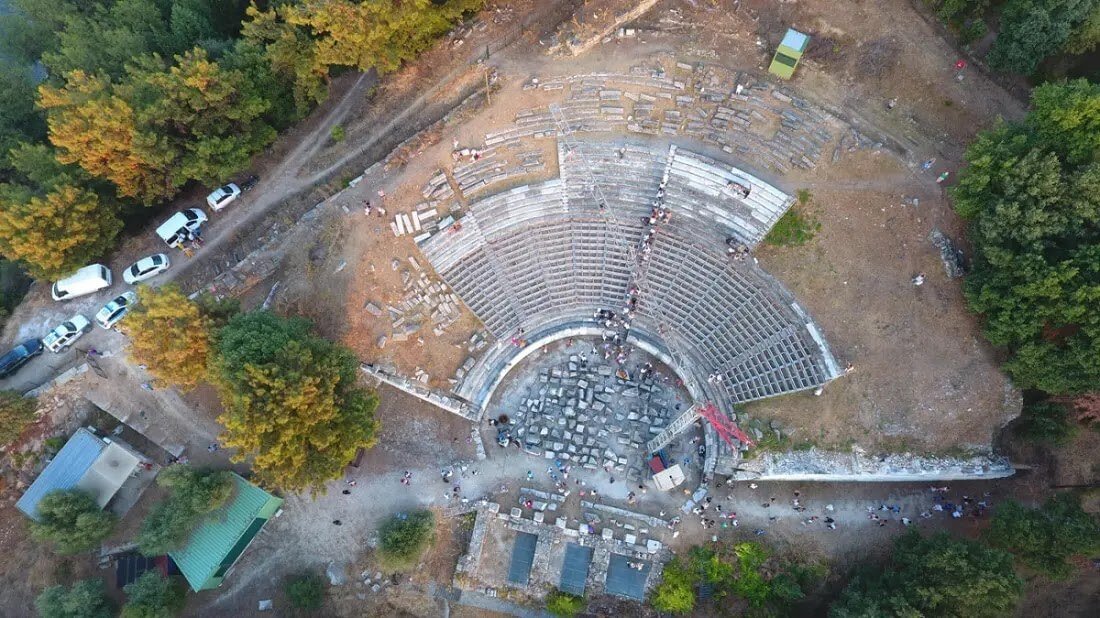The theater of Hippocrates and ancient drama and later the arena of the Roman gladiators, is almost ready for use a century after the first excavation.
On the western slope of the acropolis, in an environment overgrown with olives and pines with an unobstructed view of the blue of the northern Aegean, dominates the ancient Thassos. The theater rests on the ancient wall and faces the current Limenas and the port of the island.
The first excavation was carried out in 1921 by the French Archaeological School and George Doux, it was interrupted for several years and continued in 1961 by the Greek Archaeological Service, when under the supervision of the Greek Superintendent of Antiquities, Dimitris Lazaridis, the marble figurines of the hollow were fixed, some preliminary work was done and the monument was handed over for use hosting local Festival events.
According to the programming contract, the hollow is being restored, while the necessary infrastructure has been completed in the first 12 stands, where the marble figurines are placed, all made of the all-white Thassos marble.
Those working on its maintenance and restoration are faced with a series of problems that arise due to both the rocky subsoil and the general geophysical environment.
This is the first important and substantial restoration that takes place after that of the 2nd AD. century and soon the island will have at its disposal a great ancient ancient, worthy of its history.
Ancient quarries for its extraction operated during the Archaic, Classical, Roman and Byzantine times, while even today large quantities are exported around the world. Its main feature is its white color, compact tissue and sparkling crystals. From the Aliki quarry, one of the oldest on the island, the Arch of Galerius (Kamara) in Thessaloniki has been built, a rectangular enclosure in the center of the Sanctuary of the Great Gods in Samothrace, and also the Dome of Arsinoe also in Samothrace, while the Suetonius, the Roman historian and author of the 1st BC. century, mentions that the family tomb of Dombia, where Nero was buried, was made of Thassos marble.











